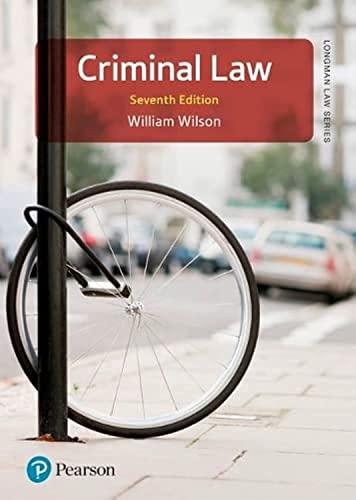Question
Shark Ltd was running a financial business that involved two departments: one department insured risky loans, while the other department lent money. In September 2002,





Shark Ltd was running a financial business that involved two departments: one department insured risky loans, while the other department lent money. In September 2002, Shark Ltd received a report from its financial adviser that noted that its insurance departments may suffer a huge loss due to rising claims. The report was correct and Shark Ltd ended up paying a number of claims worth $10 million. In February 2003, Shark Ltd registered Safe Pty Ltd. The new company was a wholly owned subsidiary of Shark Ltd. (see Corporations Act for definition). Shark transferred its insurance department to the new company. The new company was running its business from premises leased from Shark Ltd.
Often, the board of directors of Shark Ltd were heard bragging that now they could access all the funds and profits of the new company, Safe Pty Ltd., without being responsible for any of its liabilities. Safe Pty Ltd had a policy to pay monthly dividends to Shark Ltd.
Shark Ltd also appointed all the directors of Safe Pty Ltd. In fact, two of the directors of Shark Ltd (Sam and Jack) were appointed as the only directors of Safe Pty Ltd. Shark Ltd usually devised the policies of Safe Pty Ltd and Sam and Jack implemented these policies. Shark Ltd also provided the initial capital needed for the business run by Safe Pty Ltd. to proceed. The employees in Safe Pty Ltd were allowed to use some of the financial records held by Shark Ltd to assess whether or not they should accept or deny an insurance application.
In 2009, the market suffered huge losses and as a result of this downturn a number of insurance claims were made. However, Safe Pty Ltd had insufficient money to cover all these claims and consequently, the company went under liquidation.
The policy holders would like to know if they can take action against Shark Ltd.





Step by Step Solution
There are 3 Steps involved in it
Step: 1

Get Instant Access to Expert-Tailored Solutions
See step-by-step solutions with expert insights and AI powered tools for academic success
Step: 2

Step: 3

Ace Your Homework with AI
Get the answers you need in no time with our AI-driven, step-by-step assistance
Get Started


